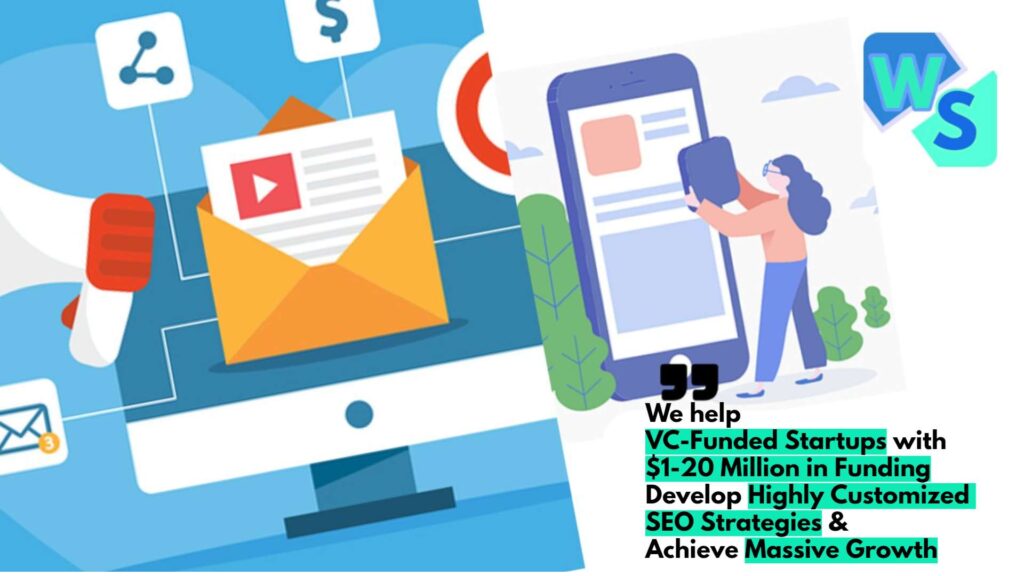The Power of Healthcare Digital Advertising
Online Presence for Healthcare Organizations
These days, if you’re running a healthcare organization, being online is not just nice to have—it’s a must. A whopping 92% of folks handle their health matters over the internet, bouncing between different sites. This means you need a website that’s not just good-looking, but easy-peasy for users to navigate (Boston Digital). It should be the centerpiece of your online strategy, like a digital version of your most trusted stethoscope.
| Metric | Percentage |
|---|---|
| Consumers managing health online | 92% |
You gotta make sure your site works like a charm on smartphones, is simple to get around, and packed with the info people are after. Using healthcare SEO marketing can boost your visibility and bring in more visitors without paying for ads.
Think about adding stories from real patients, profiles of your doctors, and details about the services you offer. This builds trust quicker than a warm handshake. Being active on healthcare social media marketing platforms can drive even more folks to your website and get them talking with you.
Importance of Content Marketing
Content marketing is your secret weapon in healthcare digital advertising. If you offer a treasure trove of health info, folks will keep coming back. Address their concerns and ease their health woes, and they’ll see you as the go-to health authority (Boston Digital). Plus, it makes turning visitors into actual patients a piece of cake.
| Content Type | Impact on Conversions |
|---|---|
| Video Content on Landing Pages | Increases by up to 80% |
Video Marketing: Slapping a good video on your website can boost conversions by up to 80%. Video’s a hit in healthcare because it turns complex health stuff into easy-to-digest bits and lets patients share their stories. We’ve got more tips on healthcare content marketing waiting for you.
Personalized Campaigns: Use healthcare CRM platforms to craft campaigns that feel tailor-made for your different patient groups. It just works better, driving better health results and growing your range of services (WebMD Ignite).
Professional Engagement: LinkedIn’s not just for job-hunting. It’s a goldmine for targeting healthcare professionals, promoting your services, teaming up with others, and becoming a thought leader (Medical Digitals). Check out healthcare online marketing for more clever strategies.
Focus on making your online presence engaging and pack a punch with content marketing strategies. That way, healthcare organizations can reach their target audience and earn their trust, boosting their digital healthcare marketing game.
Making Email Work for Healthcare
Save Money Like a Pro
Email marketing’s like a winning lottery ticket for healthcare folks looking to get noticed without splurging. Boston Digital tells us this strategy not only gives a nice return on your bucks, but also helps build that good old trustworthy bond with patients.
What makes email really stand out? It’s dirt cheap compared to old-school marketing. You toss in some change for email tools, fancy designs, and snazzy content, and boom—you’re reaching loads of people without emptying the piggy bank. Plus, you can aim your message right where it needs to go, saving even more dough.
To make email campaigns work like a charm, it’s wise to send out stuff folks actually want to read. Think health tips, reminders, and updates about snazzy new services. Keeping people in the loop and feeling cared for breeds trust and loyalty, which often means more visits and some free advertising via word of mouth (WebFX).
Need more tricks on how to make people stick around? Check out our piece on healthcare marketing strategies.
Chatting with Patients and What You Learn
Using email isn’t just about saying hello—it’s about getting people involved and learning what they like. By keeping an eye on how many open your email, link clicks, and who really does what you want them to do, healthcare providers get a peek into what their audience really digs.
For places already rich in health tips and info, there’s a golden opportunity to grab eyeballs online. Sharing advice on illnesses, symptoms, or how to not get sick boosts the likelihood that patients will stick around and see them as a trusted advisor.
Dividing folks based on age, what’s happened to them in doc visits before, and their engagement level helps in crafting messages that’ll hit home.
| What You Track | What’s That? |
|---|---|
| Open Rate | Number of people who opened your email |
| Click Rate | Number of folks clicking the links you shared |
| Conversion Rate | People doing what you hoped they’d do |
| Unsubscribe Rate | Folks deciding they’ve had enough |
Keeping tabs on these helps in buffing up your email game over time. By tuning messages to fit what folks want, you keep them interested and hopefully happy with their experience.
Check out our all-you-need-guide on healthcare email marketing for more ideas to squeeze every drop out of your email efforts.
Long story short, email marketing cuts costs and cranks up patient smiles, while cluing you in on what makes them tick. For extra tips and tricks, slip on over to our deep dive into healthcare marketing planning.
Target Marketing Strategies in Healthcare
Nailing down just the right people in healthcare marketing is like hitting a bullseye with a well-aimed dart. By slicing up the audience and tuning in to their unique needs, healthcare outfits can serve up messages and services that land with precision and resonate deeply.
Audience Segmentation
Think of audience segmentation as breaking down a big crowd into smaller, manageable groups, each with its own quirks and preferences. It’s about understanding who you’re talking to, like knowing if Grandma likes her mail the old-fashioned way or if Cousin Timmy’s all about the latest TikTok trends. According to Digital Authority Partners, to zero in on your audience, consider things like:
- Age and life stage
- Gender
- Where they call home
- How thick their wallet might be
Skipping this step is like trying to sell a flip phone to a teenager—they just won’t be interested. For instance, older folks might still fancy a chat on a landline, while others couldn’t imagine life without being glued to their smartphones (WebFX).
| Demographic | Characteristics |
|---|---|
| Baby Boomers | Might not be tech wizards, dig face-to-face meetings |
| Millennials | All about tech, fancy online bookings |
| Seniors | Need tailored approaches to snag their attention |
Reaching Ideal Clients
Getting on the radar of those you want to connect with in healthcare is all about crafting pitches that feel like they were made just for them. Healthcare providers can reach out through a mix of digital channels—think social media, emails, search engines, and more—to link up with the folks who need them most.
Social Media Advertising: Places like Facebook and Instagram let you drill down to specifics—targeting based on what people like, where they’re at, or what they’re into. It’s like sending a message in a bottle to the right shore.
Email Marketing: Slice your email list to send the right vibes to the right people. Example: Tips for golden-years health sent to grandma can boost interest and keep her coming back for more. Dive deeper into healthcare email marketing for fresh ideas.
Search Engine Marketing (SEM): With Google and pals, you can catch the eye of folks hunting for healthcare solutions online. Keywords are your best buddy here, helping your message pop up right when it’s needed.
Content Marketing: Craft posts and articles that tackle what’s on different patient groups’ minds. Curious? Check out our piece on healthcare content marketing for the scoop.
| Marketing Channel | Ideal Client |
|---|---|
| Social Media | Millennials, Gen Z |
| Email Marketing | Baby Boomers, Seniors |
| Search Engine Marketing | Everyone searching for a healthcare hand |
| Content Marketing | Knowledge-hungry health seekers |
These paths help healthcare providers click with the right audience, beefing up engagement and trust. Breaking down audiences and laser-focused targeting are the winning tickets in digital marketing runs.
For tips on tightening up your marketing for certain groups, look up our articles on healthcare marketing strategies and healthcare social media marketing.
Impact of Baby Boomers in Healthcare Marketing
Imagine trying to figure out the ripple effect of Baby Boomers on the healthcare scene—it’s like playing a game of chess with 76 million eager players. Born between ’46 and ’64, they’re the folks who are set to dominate the need for healthcare services in the coming years.
Predicted Healthcare Service Needs
Baby Boomers are slated to gobble up way more healthcare resources than the older folks before them. Picture this: by 2030, expect hospital visits from these guys to more than double up. This shift screams, “Hey, up your marketing game to zero in on what these Boomers really need!”
| Year | Number of Hospital Admissions (in millions) |
|---|---|
| Current | 12 |
| 2030 | >24 |
With this uptick in demand, those running the show in healthcare need to spruce up their digital marketing tactics. It’s all about getting noticed online and using all those nifty digital tools to appeal to these seasoned users.
Addressing Chronic Conditions
The road ahead spells a big jump in chronic conditions among Baby Boomers. We’re talking a leap from 8.6 million to a hefty 37 million by 2030 (WebFX). This surge means healthcare folks need to roll out the red carpet in terms of care and information.
| Year | Boomers with Chronic Conditions (in millions) |
|---|---|
| Current | 8.6 |
| 2030 | 37 |
Crafting handy healthcare content that tackles chronic issues head-on is a smart move. Share the good stuff—like tips on how to fend off health battles, what treatments are on the table, and wellness hacks that keep everyone smiling.
To keep up with Baby Boomers’ needs, sprinkle in some personal touches with marketing strategies. Get savvy with automation tools that sort this crowd by their health quirks and interests. And don’t sleep on email marketing; a personalized nudge in their inbox with health news or check-up reminders could be the ticket to better health outcomes.
Healthcare pros and marketing firms should stay on their toes, keeping a keen eye on trends to keep Boomers in the loop. For a deeper dive into strategies, peek into our resources on SEO tactics and market research.
Marketing Efforts Towards Existing Patients
Building Patient Loyalty
Keeping your patients coming back is more than a smart move in healthcare digital advertising. It’s like having a loyal friend who supports your clinic year-round. By focusing on current patients, healthcare providers not only ensure a steady flow of income but also cement those valuable doctor-patient bonds. When folks are satisfied, they tend to stick around, as seen in their feedback on service quality, the warmth of staff, and how effortlessly communication flows.
Here are some strategies that can make your patients feel like family:
Keeping It Personal: A little personal touch goes a long way. Whether it’s a quick email or text sharing a health nugget, a gentle nudge about upcoming appointments, or shining a light on new services, these gestures remind patients they’re appreciated.
Learning Spree: Imagine having access to a treasure chest of health wisdom. Providing loads of original, health-focused content not only draws in a crowd but keeps them engaged and informed, making you their go-to source for health queries.
Happy Vibes Only: Make every phone call, appointment, or visit delightful. A friendly face, competent staff, and quick responses work wonders to keep satisfaction high and ensure that your clinic stands out.
Feedback Frenzy: Actively asking for and using patient feedback shows you’re committed to tweaking and improving services, reassuring patients their opinions matter.
Word-of-Mouth Referrals
There’s nothing quite like a positive nod from someone who’s been there. Happy patients can turn into cheerleaders, spreading enthusiasm about your services to everyone they know, turning each recommendation into potential new patients.
To keep the word buzzing, healthcare providers can:
Ask for Shout-Outs and Star Ratings: Encourage patients to spill the beans online about their great experiences. It’s like turning each positive review into a shiny billboard proclaiming your stellar service.
Referrals with Benefits: Offering cool incentives like discounts, freebies, or little extras can spur patients to refer someone, leading to a win-win of happy patients and fresh faces.
Be a Local Hero: Getting involved with local events, sponsoring community initiatives, or setting up a tent at health fairs can boost visibility. Besides, who doesn’t appreciate a clinic that gives back?
Get Social: Engage with patients on social media. When they post about their experiences or dive into discussions, it broadens your reach and builds trust. Curious about leveraging these platforms more effectively? Check out our guide on healthcare social media marketing.
These efforts not only reinforce the bond with your patients but also widen your circle by attracting new ones. Stay ahead with new trends and techniques by reading our take on healthcare marketing trends.
By nurturing loyalty and encouraging patients to chirp about their positive experiences, clinics can strengthen their brand and enjoy thriving success in healthcare.
| Strategy | Benefit | Example Action |
|---|---|---|
| Personalized Communication | Keeps patients coming back | Shooting regular health nuggets via email |
| Educational Content | You become the health info guru | Publish helpful articles on symptoms and ailments online |
| Positive Patient Experience | Boosts satisfaction and brand loyalty | Deliver high-quality service and swift responses |
| Patient Feedback | Shows you’re listening and care | Run patient satisfaction surveys |
| Encourage Reviews and Testimonials | Attracts newbies through rave reviews | Seek online feedback after appointments |
| Patient Referral Programs | Get patients to happily spread the love | Offer cool discounts or perks for new referrals |
| Community Engagement | Elevates presence and trust | Dive into local health fairs and events |
| Social Media Engagement | Widens your reach and builds trust | Spark patient experience sharing on social media |
Want more insights on ramping up your healthcare marketing game? Take a look at healthcare content marketing and healthcare email marketing.
Marketing to Senior Citizens in Healthcare
Marketing to senior citizens in the healthcare industry calls for a strategic touch that respects their unique needs and quirks. They’re a fast-growing bunch, and smart healthcare digital advertising is the way to pull them in and keep ’em coming back.
Custom-fit Plan
When targeting seniors, you’ve gotta think outside the young crowd’s box. Lots of older folks might not be clicking away on gadgets like the younger set. As noted by WebFX, about half of Baby Boomers skip the laptop or smartphone. So, mix it up—blend the old school with the new school in your marketing game.
Smart Moves
- User-Friendly Websites: Get your healthcare website design rocking with simple layouts, big fonts, easy-peasy navigation, and easy-to-find info.
- Helpful Content: Fill up your online space with useful content on health topics that draw a wide crowd. Sharing facts about illnesses, symptoms, and crucial healthcare tips can up patient engagement (Boston Digital).
- Catchy Newsletters: Keep them in the loop with email marketing. Make sure these emails are straightforward and packed with handy health advice and news. See more in our article on healthcare email marketing.
Pulling in Senior Patients
To win over senior patients, healthcare providers need to gain their trust and make them feel secure. Seniors are on the hunt for trustworthy medical pros who get where they’re coming from health-wise.
Winning Tactics
- Good Word of Mouth: Get current patients to share the love with reviews and testimonials. Seniors really value what their peers say.
- Chronic Ailment Aid: Shine a light on services that focus on managing chronic health problems. Predictions show a jump from 8.6 million to 37 million Boomers dealing with chronic issues by 2030.
- Senior-Centric Gatherings: Organize events just for them, both face-to-face and virtual. Think health fairs, screenings, and wellness workshops. Promote these happenings online to broaden your audience. Learn more in our healthcare marketing campaigns section.
Table: How Seniors Prefer to Communicate
| Communication Way | Use Rate |
|---|---|
| Snail Mail | 86% |
| TV | 75% |
| Email Bulletins | 65% |
| Phone Chats | 55% |
These stats scream for a mixed approach in reaching out to senior patients effectively.
By getting the hang of these custom strategies, healthcare peeps can build a more friendly digital healthcare marketing scheme geared for seniors. For more tips, check out our stash of healthcare marketing strategies.
Growth of Digital Marketing in Healthcare
Digital marketing has swooped into the healthcare scene like a superhero in a crisis, largely propelled by the COVID-19 pandemic. This shift has seen healthcare jump from old-school ways to digital platforms faster than you can say “Zoom call.”
Pandemic-Driven Growth
When COVID-19 hit like a wrecking ball, healthcare folks had to think on their feet. Suddenly, the internet became the go-to place to reach patients. Hospitals and clinics found themselves rolling out digital strategies to keep serving their communities, increasing foot traffic—or rather, click traffic—into their digital doors. The reward? Beefed-up revenues and a boom in telemedicine appointments (PubMed Central).
Google, our ever-faithful search buddy, sees 70,000 health-related searches hitting the search bar every minute. That’s not just a number; it’s a treasure trove for healthcare companies waiting to connect with patients right where they are: online (Medical Digitals).
Return on Digital Visits
The digital marketing drive isn’t just a flash in the pan. It’s paying off in heaps, especially when folks show up for their virtual visits. Good old YouTube, the world’s second-favorite search engine, is a goldmine for healthcare ads. It’s like having a teacher that explains the tough stuff with video, so it sticks. Pew Research says 51% of YouTube fans are there to learn something new, which shows its power in spreading health wisdom (Medical Digitals).
Then there’s Google Ads, a loyal sidekick in the marketing universe, providing top-tier targeting for health companies. When you smartly mix search ads with display and video ads, you’re steadily climbing the ranks in search results and charming potential patients (Medical Digitals).
Getting the hang of SEO and content marketing is also your ticket to the big time. These tactics place healthcare services high in search rankings, attracting patients like bees to honey, especially for locals looking for nearby options (Healthy Ads).
| Search Engine | Health-Related Searches per Minute |
|---|---|
| 70,000 |
For a treasure chest of strategies to boost returns on digital visits, check out healthcare marketing strategies and digital healthcare marketing.
Digital appointments are comfy, saving both time for patients and bringing in some crisp cash for healthcare businesses. As more healthcare gangs up with digital marketing, getting a handle on its growth and picking the right digital tools will keep you ahead of the game.
Healthcare Marketing Regulations
When it comes to playing the healthcare game, sticking to the rules is vital—especially if you’re marketing through the digital jungle. Following regulations not only keeps your patient info locked tighter than Fort Knox but also makes sure you’re on the public’s good side.
Keeping It HIPAA-Real
So here’s the deal with HIPAA—the superhero act designed to protect patient info like a secret identity. Healthcare pros need to get that good old fashioned signed permission slip before they even think about throwing someone’s medical stats into marketing (Healthy Ads). Nailing HIPAA compliance is key to any legit healthcare ad campaign.
What You Gotta Do for HIPAA Compliance:
- Get It in Writing: Yep, we’re talking plain, no-nonsense permission from patients. Those consent forms gotta spell out exactly what you’re planning to do with their info (Healthy Ads).
- Guard That Info: Keep patient data under lock and key. Your marketing mojo should always have data security as its BFF.
- Know Your Crowd: Get the 411 on who you’re selling to. This helps you stay HIPAA-friendly and still hit the bullseye with your message.
| Requirement | Description |
|---|---|
| Written Consent | Show the blueprint of how their health info will be used for marketing. |
| Patient Confidentiality | Be the data guardian that their info needs. |
| Target Audience | Scope out and study up on your marketing peeps. |
Want more juice on compliance strategies? Scope out the section on healthcare marketing strategies.
FDA and FTC Rules of the Road
The Food and Drug Administration (FDA) and the Federal Trade Commission (FTC) have their own rules of the road to make sure healthcare ads are playing it straight and narrow.
FDA Rules:
FDA’s eagle eye is laser-focused on drug ads. They ask marketers to spill the real tea about what a medicine can and can’t do, but they’re cool with not squeezing every drop of info into the ad (Media Place Partners).
FTC Playbook:
FTC makes sure no one’s pulling the wool over consumers’ eyes with their ad talk. Healthcare ads need to:
- Keep It Real: Every claim in an ad should stand on solid ground and not be pulling a fast one.
- Be Crystal Clear: Important info needs to stand out like a neon sign to avoid any mix-ups.
| Regulation | Description |
|---|---|
| FDA | Spill the beans on what a drug can and can’t do, but don’t write a novel. |
| FTC | Keep claims legit and make the important stuff pop out. |
Knowing the play-by-play of these rules is the secret sauce to a marketing plan that sticks. For more fresh-off-the-press practices, check out our healthcare marketing blog.
By sticking to the HIPAA, FDA, and FTC rules, healthcare pros can rock the digital marketing world without tripping over any red flags. Want to dive deeper into how to play by the rules and still crush it? Check out the scoop on digital healthcare marketing for strategies that fly under the radar of the regulation police.



















